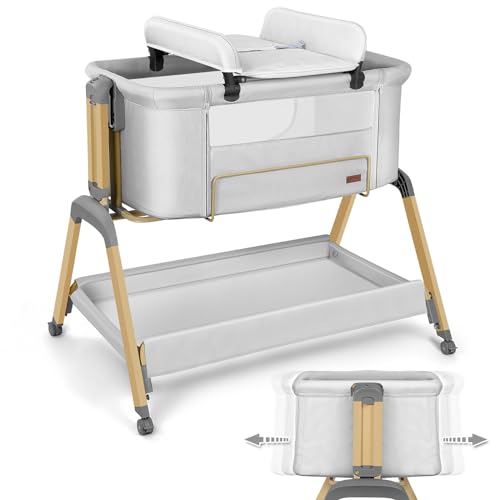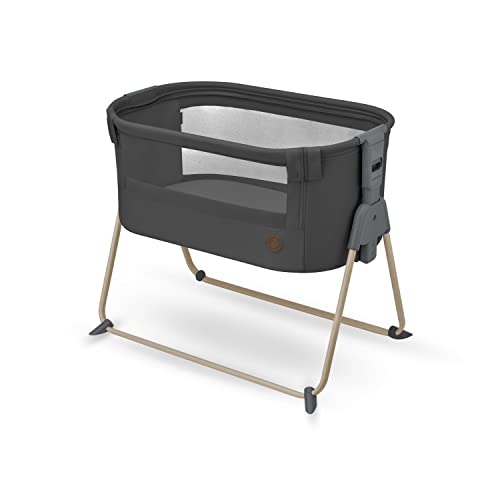
Best Cot Bed
Add a review FollowOverview
-
Founded Date August 21, 1947
-
Specializations Elderly Care
-
Posted Jobs 0
-
Viewed 1
Company Description
Why You Should Concentrate On Improving Tots And Cots

Tots and Cots: A Comprehensive Guide for Parents
When it concerns guaranteeing a safe and comfy sleeping environment for babies and young children, the options parents make– varying from cribs to cots– can substantially impact their well-being. Today’s post dives deep into the intricacies of choosing the best sleeping arrangements for tots, highlighting security, style, functionality, and how these choices progress as a kid grows.
Comprehending Tots and Cots
Tots generally describe young children, especially toddlers aged between 1 to 3 years, while Top Rated Cots are the sleeping arrangements specifically created for babies and toddlers. The suitable sleeping devices for this age group includes different kinds of cots, cribs, and young child beds.
Kinds of Cots
Different styles exist to satisfy the diverse requirements of both moms and dads and kids. Below is a list outlining the most typical types of affordable cots available:
-
Standard Crib
- A standard crib is designed for infants and generally consists of sides that can be gotten used to various heights.
-
Convertible Crib
- This type of crib can convert into a young child bed, daybed, or full-sized bed as the child grows, making it a long-term financial investment.
-
Portable Crib
- Likewise understood as travel online cots, these are light-weight and quickly collapsible, perfect for taking a trip or smaller living spaces.
-
Co-Sleeper
- A co-sleeper crib connects to the side of the moms and dads’ bed, permitting for simple gain access to while guaranteeing the baby has a different and safe sleeping space.
-
Young child Bed
- A toddler bed is a little bed that resembles a basic bed however is developed particularly for young children, normally including safety rails.
-
Mini Crib
- Mini Cot Bed cribs are smaller than basic cribs, making them a terrific choice for tight spaces, however they appropriate for infants just.
Safety Considerations
Making sure security is vital when picking a cot for a child. Here are vital security standards moms and dads must think about:
- Check for CPSC Certification: Ensure that the cot complies with the Consumer Product Safety Commission (CPSC) requirements.
- Prevent Drop-Sides: Cots with drop-sides have actually been connected to security hazards, and the newest security guidelines prohibit them.
- Utilize a Firm Mattress: A firm mattress minimizes the risk of suffocation and should fit comfortably within the cot.
- Keep Bedding Simple: Use a fitted sheet and avoid pillows, comforters, and packed animals that can position suffocation hazards.
- Follow Weight and Age Guidelines: Ensure the kid has not exceeded the cot’s weight limit and is still within the advised age.
Transitioning from a Cot to a Toddler Bed
The transition from a cot to a toddler bed can be an emotional turning point for both parents and kids. Here are actions to relieve the transition:
Timing
Deciding when to transition can be subjective, but it’s typically recommended to make the switch between 18 months and 3 years, based upon elements like:
- Physical Ability: If the child is climbing up out of the cot.
- Potty Training: Consider transitioning if the kid is toilet training and needs much easier access.
- Habits: Exhibiting indications of maturity, such as following directions or revealing a desire for independence.
Tips for Making the Transition Smooth
-
Include Your Child: Let the child pick their brand-new bedding or bed decor to impart excitement about the modification.
-
Keep Routine Consistent: Maintain the kid’s bedtime routine to supply comfort throughout this duration of change.
-
Explain the Change: Discuss the shift to a toddler bed favorably, making it sound like a great adventure.
-
Security Measures: Place the bed against the wall or use bed rails to prevent falling throughout sleep.
Selecting the Right Bed
When picking a toddler bed, parents require to think about factors like:
- Height: Low-profile beds are ideal for young children who may fall out during sleep.
- Sturdiness: Ensure the bed can stand up to active play as well as sleep.
- Style and Design: Choose a design that complements the child’s room and is appealing to the kid.
Selecting the right cot for your kid can be a challenging process, however understanding the alternatives offered, key security factors to consider, and the ideal timing for transitioning to a toddler bed can make this journey much easier for parents. Investing time and effort into these decisions will ensure that your child has a safe, comfy, and nurturing sleep environment.
Frequently asked questions
1. What is the difference between a cot and a crib?
- A cot is typically a smaller bed developed for more youthful young children, while a crib is a bigger bed that is generally ideal for babies as much as 3 years of ages.
2. When should I move my child from a crib to a young child bed?
- The transition time is normally between 18 months and 3 years; this change is based upon the child’s physical capabilities and behavioral indications.
3. How can I ensure my kid is safe while sleeping?
- Always stick to safety standards, use a company mattress with a basic bed linen plan, and monitor the cot’s weight limitation.
4. What should I do if my kid tries to climb up out of the cot?

- If your child is climbing out, it may be time to think about transitioning to a toddler bed to prevent falls.
5. Can I utilize the exact same bed mattress when transitioning?
- Usually, it is best to change the crib bed mattress with one that is particular to the toddler bed. Ensure it fits comfortably and abides by security requirements.
By considering these elements, moms and dads can model healthy sleep practices and supply their children with a safe environment that promotes relaxing sleep. Buying quality sleeping plans will add to the child’s total development and joy.
